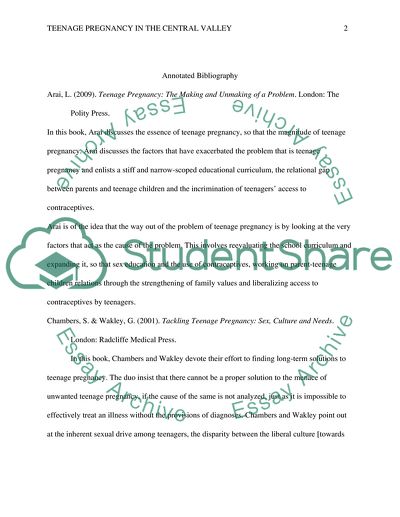Cite this document
(“Education/prevention on Teenage Pregnancy in the Central Valley, CA Annotated Bibliography”, n.d.)
Retrieved from https://studentshare.org/health-sciences-medicine/1621862-educationprevention-on-teenage-pregnancy-in-the-central-valley-ca
Retrieved from https://studentshare.org/health-sciences-medicine/1621862-educationprevention-on-teenage-pregnancy-in-the-central-valley-ca
(Education/Prevention on Teenage Pregnancy in the Central Valley, CA Annotated Bibliography)
https://studentshare.org/health-sciences-medicine/1621862-educationprevention-on-teenage-pregnancy-in-the-central-valley-ca.
https://studentshare.org/health-sciences-medicine/1621862-educationprevention-on-teenage-pregnancy-in-the-central-valley-ca.
“Education/Prevention on Teenage Pregnancy in the Central Valley, CA Annotated Bibliography”, n.d. https://studentshare.org/health-sciences-medicine/1621862-educationprevention-on-teenage-pregnancy-in-the-central-valley-ca.


